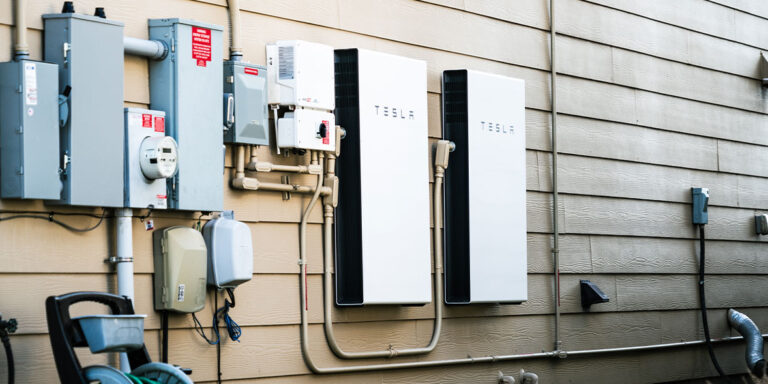Introduction: Stay Powered Through Anything
Power outages are becoming more common whether it’s due to storms, wildfires, or unexpected blackouts. Losing electricity for even a few hours can turn your day upside down. But there’s a smart, quiet solution that keeps everything in your home running smoothly: a whole house battery backup system.With systems like Anker SOLIX, you’ll never have to worry when the lights flicker or the grid goes down. Your home stays powered, your internet stays connected, and life keeps moving without noise, gas, or stress.
What Is a Whole House Battery Backup?
A whole house battery backup is a powerful energy storage system that keeps your entire home running during a power outage. It charges using electricity from solar panels or the utility grid, then automatically takes over if the power goes out.
These batteries are:
- Quiet: No humming or engine noise
- Automatic: No switches or setups needed
- Clean: No fumes or harmful emissions
Unlike gas generators that need constant attention and fuel, battery backups are low-maintenance, reliable, and built for the modern home.
Why You Need One in Today’s World
Here are the top reasons homeowners are switching to whole house battery backups:
1. Uninterrupted Power in Emergencies
Storms, grid issues, and planned outages can happen without warning. A backup battery keeps everything from your fridge to your home office running smoothly even for days.
2. Perfect for Work-from-Home or Medical Devices
Do you work remotely or use critical medical equipment? A power outage can disrupt your safety and income. Battery backups ensure your internet, computers, and devices never shut down.
3. Energy Independence
Pair your battery with solar panels to generate and store your own power. Use solar energy during the day and rely on your battery at night or during outages. It’s a step toward energy freedom.
4. Clean, Quiet, and Environmentally Friendly
Battery systems are emission-free, silent, and safe for indoor use. Unlike gas-powered generators, they help protect the environment and don’t disturb your neighborhood with noise.
How It Works
It’s simple and smart:
- Charge Up: The battery stores energy from solar panels or the power grid.
- Stay Alert: The system monitors power conditions and home usage 24/7.
- Instant Backup: During an outage, it switches to battery power in under a second.
- Recharge: When power returns, the battery recharges and gets ready for next time.
Many systems like Anker SOLIX—also include apps, so you can track battery levels and energy savings right from your phone.
Whole-Home vs. Partial Backup: What’s Right for You?
Partial Backup Systems:
These cover only the essentials: lights, fridge, Wi-Fi, and maybe a few outlets. They’re cheaper but won’t power everything in your home.
Whole House Battery Backups:
These systems power everything from your kitchen appliances to air conditioning, washer, dryer, entertainment center, and more. For complete peace of mind and long outages, whole-home systems are the best choice.
Key Features to Look For
When choosing a battery backup system, keep these things in mind:
1. Battery Capacity (kWh)
This tells you how much energy the battery can store. A typical home may need 10–20 kWh for daily use. Bigger homes or those with electric cars might need more.
2. Power Output
This is about how many appliances your battery can power at the same time. Choose a system that can handle big loads like ovens, HVACs, and charging stations.
3. Solar Compatibility
Planning to use solar energy? Make sure your battery works well with solar panels. This lets you store free energy and reduce utility bills.
4. Smart Monitoring
Modern systems often come with apps and dashboards to help you watch your energy use, see your savings, and track your battery’s status.
5. Scalability
Start small and grow over time. Choose a system that lets you add more batteries later as your needs change.
Cost: What You Should Expect
A whole house battery backup system usually costs between $10,000 and $25,000, depending on size, features, and whether it includes solar panels.
It may sound like a big investment—but don’t forget:
- Federal and state tax credits can lower your upfront cost
- Lower electricity bills help you save money over time
- No hotel stays, spoiled food, or lost work during outages
- Some areas offer extra rebates for energy storage systems
Easy Installation and Low Maintenance
Most systems like those from Anker SOLIX are designed for easy, professional setup. Here’s what to expect:
- Site Review: Experts check your power needs and home layout
- Custom Design: The system is tailored to your home’s size and energy goals
- Fast Setup: Installation often takes just 1–2 days
- Low Maintenance: No fuel, filters, or moving parts just occasional software checks
FAQs
Is it worth the cost?
Yes, especially if you live in a place with frequent outages, rely on medical devices, or work from home. The safety, savings, and convenience are priceless.
How much does it cost?
Between $10,000 and $25,000, depending on system size. Incentives can reduce this, and long-term savings help cover the rest.
How do I choose the right system?
Start with your energy needs. Then look for solar compatibility, smart features, and trusted brands like Anker SOLIX for proven reliability and performance.
Final Thoughts: Take Control of Your Power
Power outages shouldn’t interrupt your life. With a whole house battery backup system, you can take charge of your energy, protect your home, and enjoy total peace of mind no matter what the grid does.Ready to upgrade your home’s energy security?
Explore Anker SOLIX’s whole-home solutions today and never be left in the dark again.

